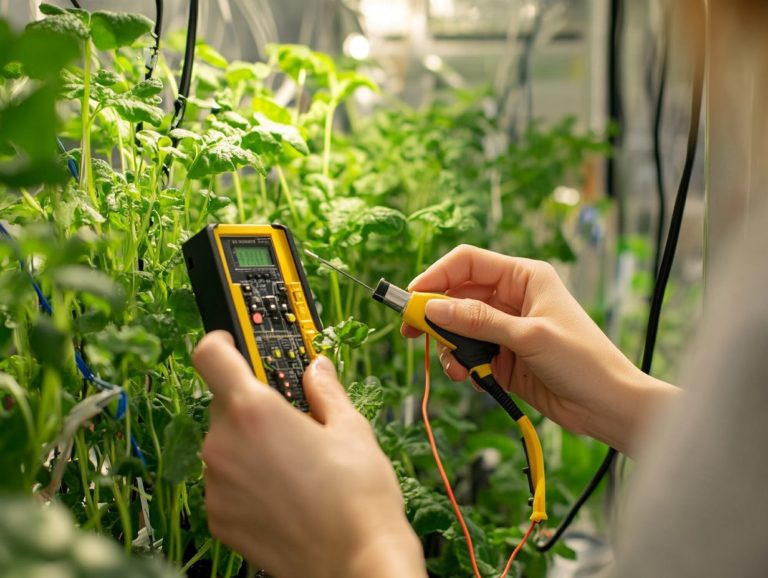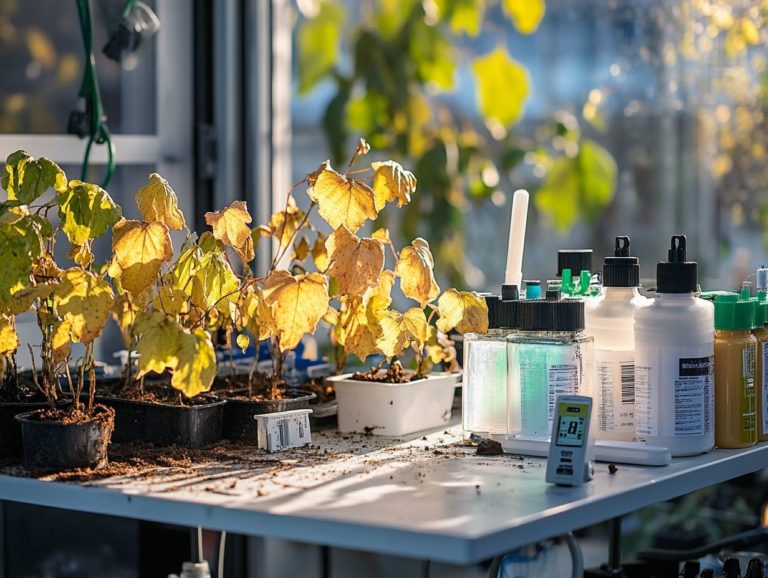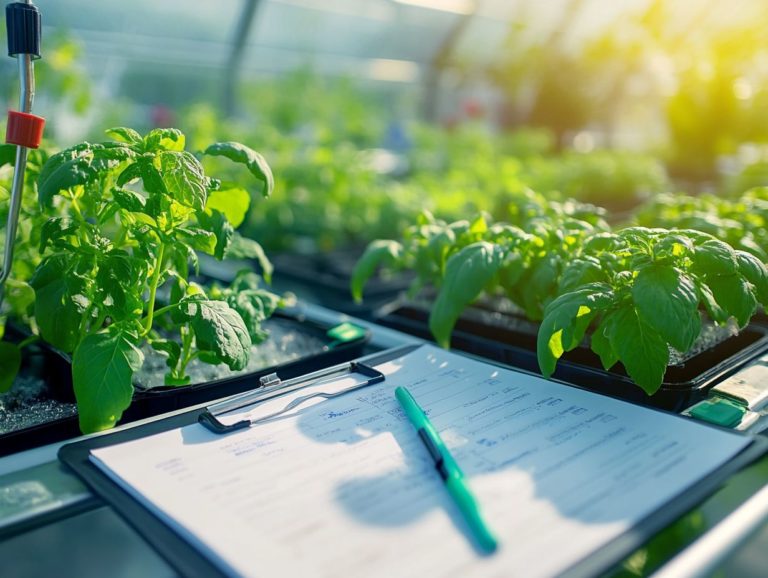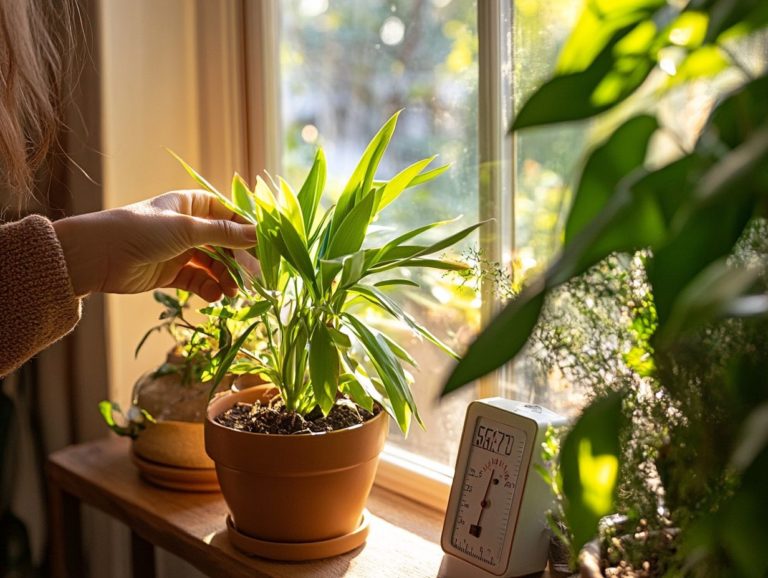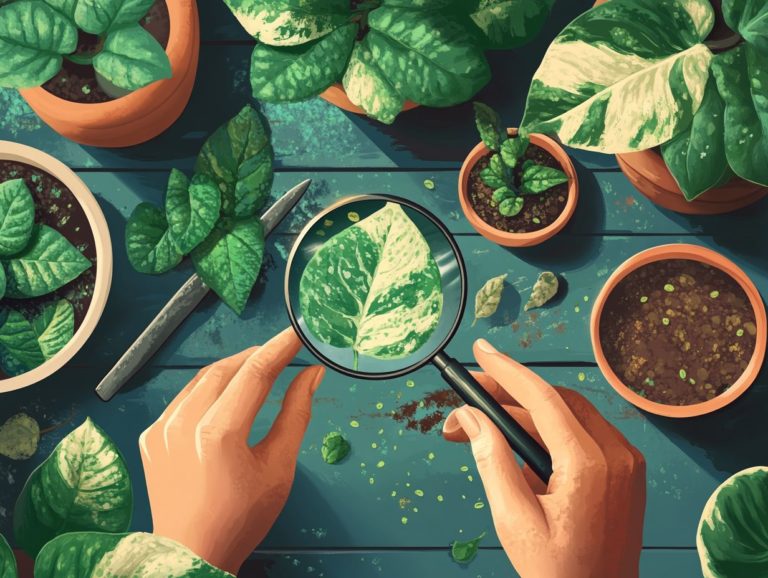Choosing the Right Medium for Hydroponics
Hydroponics has transformed your approach to growing plants, presenting a soilless method that maximizes efficiency and yields.
Central to this innovative technique is the choice of growth medium, which is vital for ensuring plant health and productivity.
This article delves into how selecting the right medium can elevate plant growth. It covers essential factors to consider for optimal performance and the various types of mediums available.
Whether you’re starting out or are a seasoned grower, grasping these concepts will empower you to make smart choices today for a thriving garden tomorrow!
Contents
- Key Takeaways:
- What is Hydroponics and How Does it Work?
- Benefits of Using the Right Medium
- Factors to Consider When Choosing a Medium
- Types of Mediums for Hydroponics
- How to Choose the Right Medium for Your Plants
- Frequently Asked Questions
- What is hydroponics and why is the right medium important?
- Which mediums are best for hydroponics?
- How do I choose the right medium for my hydroponic system?
- What are the benefits of using coco coir as a medium?
- Can I reuse my hydroponic medium?
- Are there downsides to using certain mediums for hydroponics?
Key Takeaways:
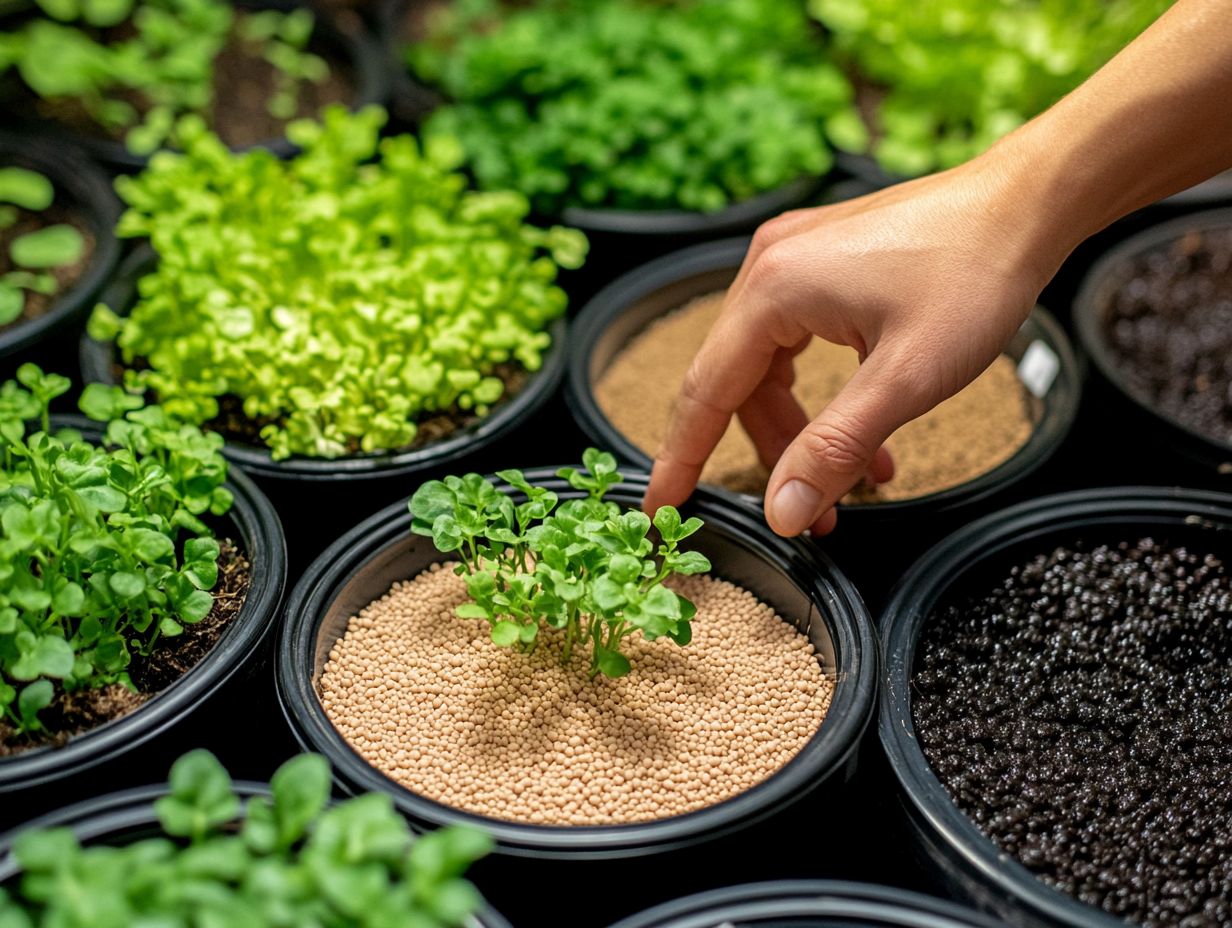
- Get ready to discover why the right medium can make your plants thrive!
- Consider factors such as water retention, aeration, pH balance, and nutrient availability when selecting a medium.
- Research different types of mediums, each with pros and cons, to choose the best one for your specific plants and setup.
What is Hydroponics and How Does it Work?
Hydroponics presents an innovative agricultural approach that enables you to grow plants without soil. Instead, nutrient solutions liquid containing nutrients for plants are delivered directly to the roots, using sustainable materials and advanced techniques to promote best growth.
This method also tackles environmental concerns by reducing reliance on pesticides and minimizing water consumption, positioning itself as a highly efficient and eco-friendly alternative to conventional farming practices.
Grasping the principles of hydroponics is vital for anyone keen on exploring modern gardening or agriculture.
Benefits of Using the Right Medium
Choosing the right hydroponic media is essential for fostering optimal plant growth and health. It directly influences water retention, nutrient delivery, and the overall success of your hydroponic system. This choice can lead to enhanced yields and healthier plants.
Various organic mediums, such as coconut coir and expanded clay pellets, offer distinct advantages and can effectively address common moisture challenges, making them top picks for discerning growers.
By selecting the most suitable medium, you can significantly enhance the efficiency of your nutrient solutions and boost the vitality of your plants.
Improved Plant Growth and Health
Selecting the right hydroponic media can significantly enhance your plants’ growth and health by creating an ideal environment for nutrient uptake and root development.
Your choice of medium is pivotal, as it acts not only as a support system but also affects moisture retention and air retention. Take coconut coir, for example; its natural fibrous structure retains moisture while allowing air to circulate around the roots, fostering vigorous growth. Conversely, expanded clay pellets excel in drainage, preventing root rot and ensuring your plants receive the right amount of water. To learn more about the different growing methods, check out the pros and cons of media-based hydroponics.
In both scenarios, the interaction with nutrient solutions is crucial; these media facilitate the absorption of essential minerals and nutrients, enabling your plants to thrive.
Factors to Consider When Choosing a Medium
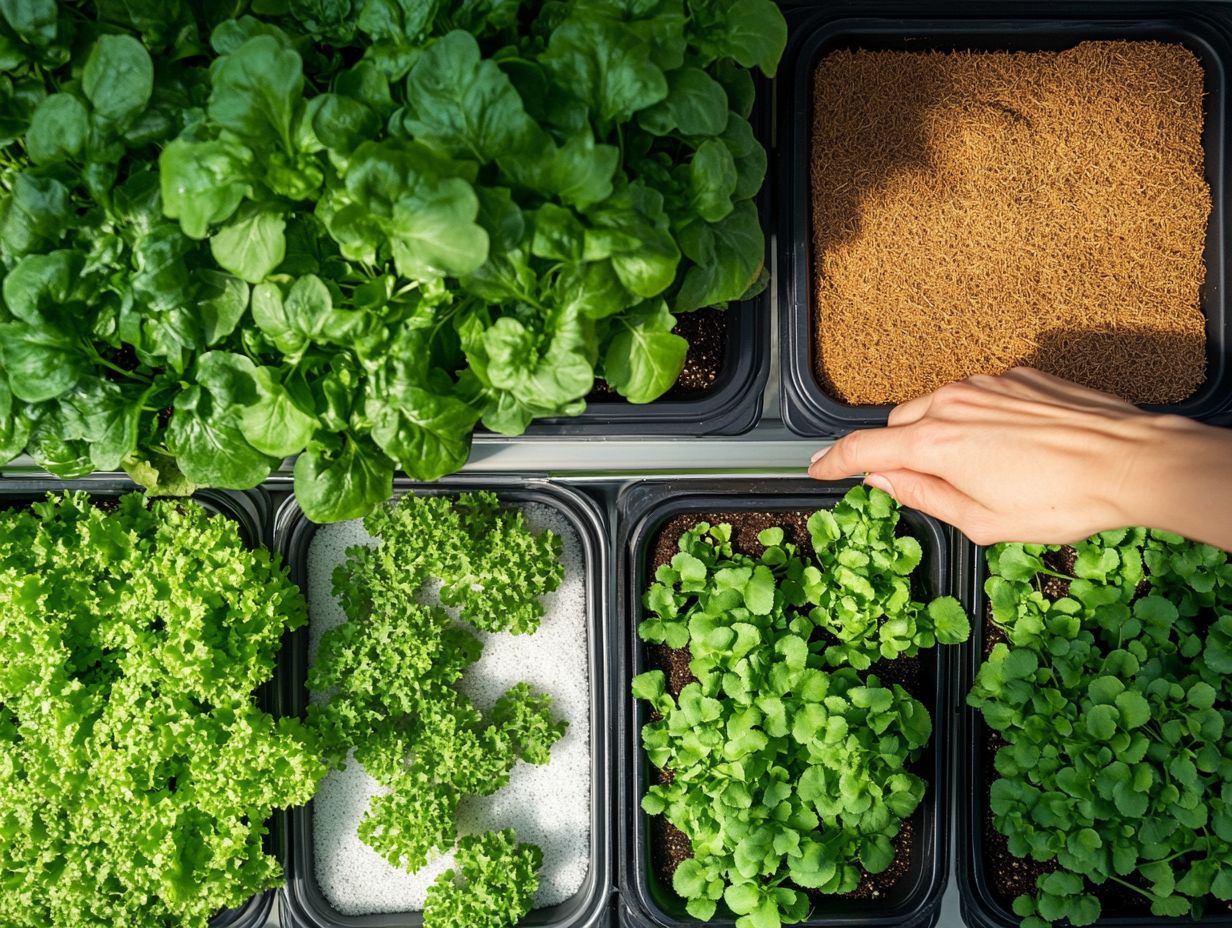
Choosing the right hydroponic media requires careful consideration of several key factors. You ll want to evaluate water retention, aeration, drainage ability, and how effectively the media addresses potential moisture issues.
Each of these elements plays a crucial role in ensuring successful plant cultivation.
Start your hydroponic journey today and watch your plants flourish!
Water Retention and Aeration
Water retention and aeration are vital components of water-based growing systems, influencing the balance between moisture availability and oxygen access for your plant roots.
Achieving this delicate equilibrium is crucial for optimal plant growth. Too much water can lead to root rot. Not enough moisture can hinder nutrient uptake. To enhance your hydroponic setup, it’s important to consider how to choose grow lights for hydroponics as the specific growing media you choose plays a significant role in maintaining this balance.
For example, expanded clay pellets offer excellent aeration thanks to their porous structure. This structure allows roots to breathe while retaining sufficient moisture to keep plants healthy. In contrast, coconut coir is renowned for its exceptional water retention, making it a prime choice for crops sensitive to water levels.
To effectively manage moisture levels, regularly monitor the moisture content. Adjust your watering schedule according to your plants’ needs. Utilizing sensors provides valuable insights into the conditions of your growing medium, ensuring optimal growth and preventing moisture-related issues.
pH Balance and Nutrient Availability
Maintaining a pH-neutral environment is crucial for ensuring optimal nutrient availability in hydroponic media. This directly influences your plants’ growth and overall health, especially when considering different organic mediums.
A balanced pH is essential because it allows vital nutrients, such as nitrogen, phosphorus, and potassium, to be accessible to your plants, preventing deficiencies that could impede their development.
Different hydroponic media, including rock wool, coco coir, and perlite, exhibit unique characteristics regarding pH stability. For example, coco coir tends to lean slightly acidic, while perlite maintains a more neutral pH.
To effectively monitor and adjust pH levels, regular testing is key. Using pH meters or test strips will provide you with accurate readings. Incorporating pH up or down solutions will help you maintain that desired balance.
By tailoring the pH to suit the specific media you choose, you can significantly enhance your plants health and yield.
Types of Mediums for Hydroponics
You have a wealth of hydroponic media at your disposal, each offering distinct characteristics and benefits tailored to your specific growing needs and preferences. Options include:
- Oasis Cubes
- Growstones
- Vermiculite
Coconut coir, expanded clay pellets, perlite, and rockwool each bring their own unique advantages, helping you achieve the best results in your hydroponic journey.
Comparison of Different Types
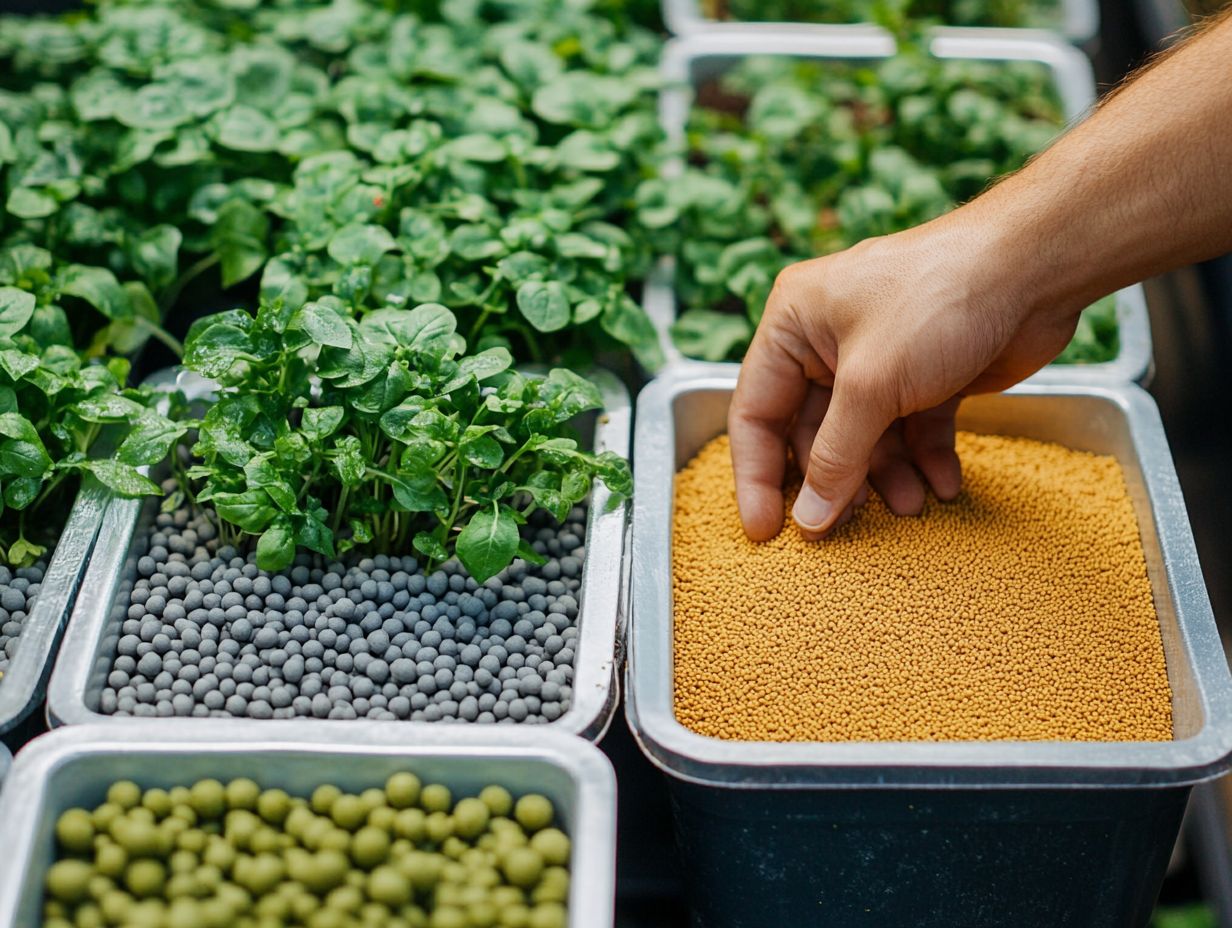
When you’re comparing different types of hydroponic media, it’s essential to evaluate their drainage capabilities and water retention. Consider how well they suit specific plant types. Each medium has its own set of characteristics that can greatly influence plant health and growth rates at various stages.
Take coconut coir, for example. It retains moisture impressively while offering excellent aeration, making it perfect for nurturing seedlings.
In contrast, expanded clay pellets shine when it comes to drainage, fostering robust root systems during the vegetative phase.
Perlite, being lighter, enhances aeration, allowing young roots to easily access oxygen. Meanwhile, rockwool excels in water retention and insulation, making it an ideal choice for cloning and early germination.
By understanding the nuances of these media, including compactable options, you can make informed decisions tailored to your specific hydroponic setup.
How to Choose the Right Medium for Your Plants
Selecting the ideal hydroponic medium for your plants requires a nuanced understanding of their unique needs, environmental factors, and the interactions between different media and hydroponic systems.
This careful consideration enables you to optimize growth and maximize yield. Ensure your plants thrive in their tailored environment through the use of sustainable practices.
Start your hydroponic journey today and choose the best medium for your plants!
Tips and Considerations
When selecting a hydroponic medium, keep in mind several crucial tips and considerations. Addressing moisture problems, managing weight issues, and opting for reusable media are key to creating a sustainable growing environment.
Understanding the characteristics of different types is essential. For instance, lightweight options like coconut coir or perlite make handling much easier. In contrast, rock wool excels at moisture retention. To tackle moisture problems effectively, regularly monitor drainage and aeration while maintaining proper nutrient levels. Additionally, exploring hydroponic grow media options can provide valuable insights into optimizing your gardening setup.
Investing in reusable media cuts down on waste and fosters a healthier ecosystem for your plants by reducing the need for frequent replacements. To further enhance your hydroponic setup, understanding how to choose the right nutrient solution is key. By balancing these factors, you can create optimal conditions that promote sustainability in hydroponics. Imagine growing your plants without soil!
Frequently Asked Questions
What is hydroponics and why is the right medium important?
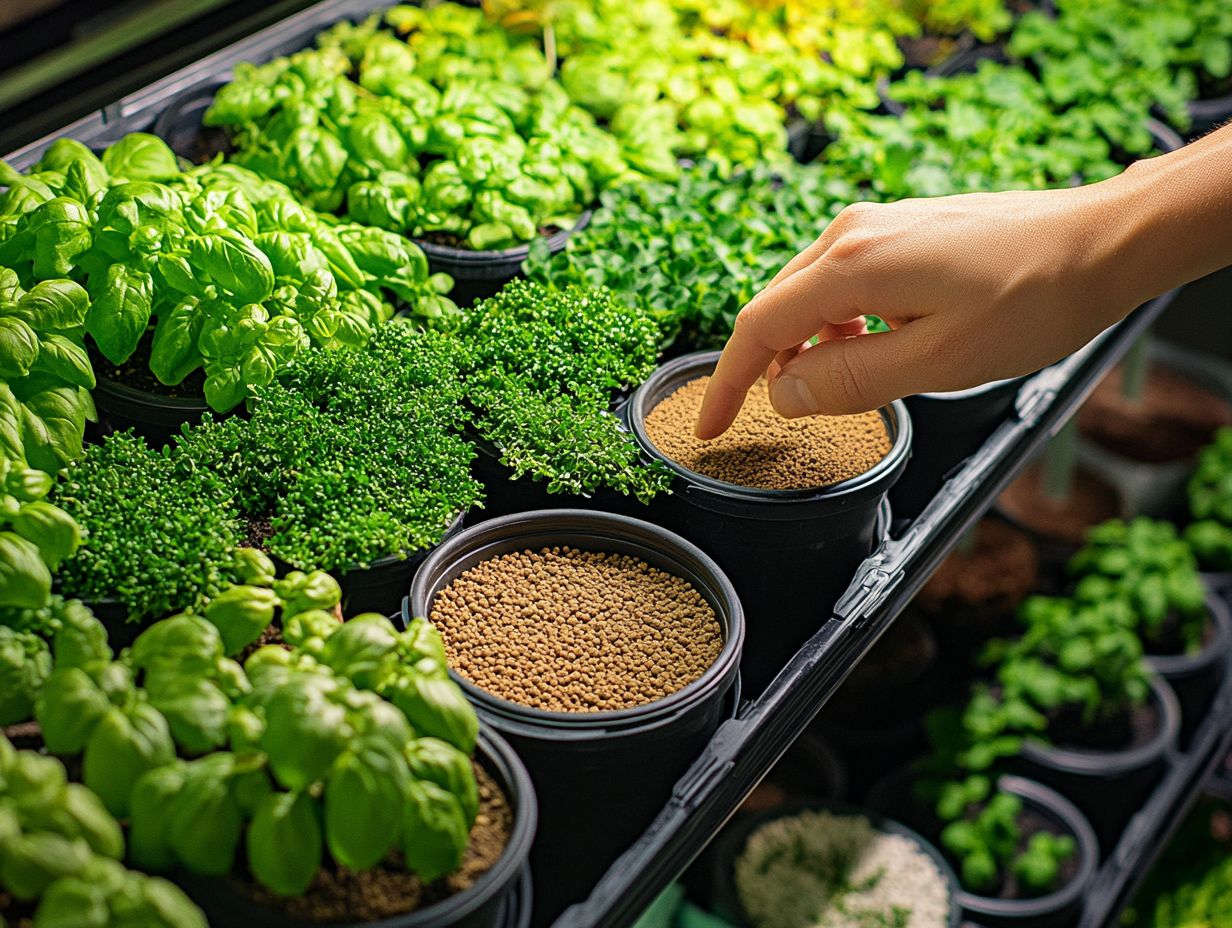
Hydroponics is a method of growing plants without soil, using a water-based nutrient solution water infused with essential nutrients for plant growth. The right medium supports plants and delivers necessary nutrients.
Which mediums are best for hydroponics?
The most common mediums used in hydroponics include coco coir, rockwool, peat moss, perlite, and vermiculite. Other options are clay pellets, gravel, and sand.
How do I choose the right medium for my hydroponic system?
Choosing the right medium depends on factors like the type of plants you want to grow, the size of your system, and your budget. Research your plants’ needs and experiment with different mediums to find the best option for your system.
What are the benefits of using coco coir as a medium?
Coco coir is a popular choice for hydroponic systems due to its excellent water retention, aeration, and nutrient retention capabilities. It’s also a renewable resource and an environmentally friendly option.
Can I reuse my hydroponic medium?
Yes, many hydroponic mediums can be reused after proper cleaning and sterilization, helping you save money and reduce waste. However, some mediums, like rockwool, may deteriorate over time and need to be replaced.
Are there downsides to using certain mediums for hydroponics?
Some mediums, like peat moss and rockwool, can contain high levels of salts and may require frequent flushing to prevent nutrient buildup. Others, like sand and gravel, might not provide enough aeration for certain plants. It s essential to research the needs of your chosen medium before use.
Start experimenting with different mediums today to boost your hydroponic garden!

